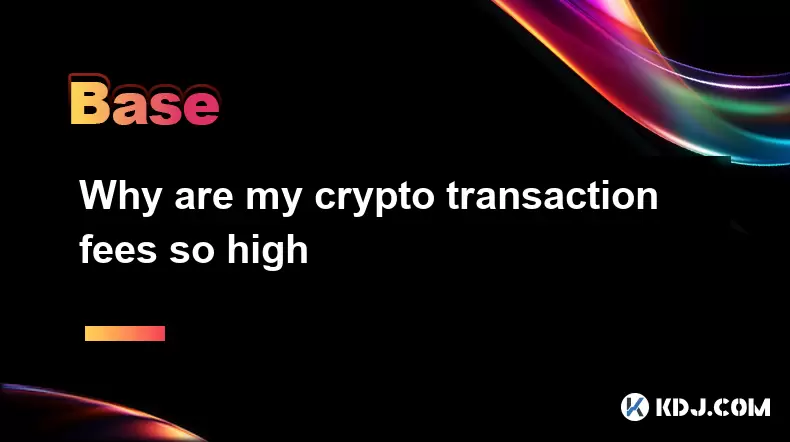-
 Bitcoin
Bitcoin $117,623.6666
0.22% -
 Ethereum
Ethereum $3,118.3376
5.20% -
 XRP
XRP $2.9135
1.52% -
 Tether USDt
Tether USDt $1.0001
0.01% -
 BNB
BNB $686.9764
0.85% -
 Solana
Solana $162.6889
1.69% -
 USDC
USDC $0.9999
0.00% -
 Dogecoin
Dogecoin $0.1969
2.83% -
 TRON
TRON $0.3010
0.33% -
 Cardano
Cardano $0.7390
1.96% -
 Hyperliquid
Hyperliquid $47.4375
-1.09% -
 Stellar
Stellar $0.4579
2.57% -
 Sui
Sui $4.0002
1.65% -
 Chainlink
Chainlink $15.9383
3.70% -
 Hedera
Hedera $0.2348
1.25% -
 Bitcoin Cash
Bitcoin Cash $497.4031
0.86% -
 Avalanche
Avalanche $21.8528
5.41% -
 UNUS SED LEO
UNUS SED LEO $8.8249
-2.01% -
 Shiba Inu
Shiba Inu $0.0...01362
5.22% -
 Toncoin
Toncoin $3.0789
3.06% -
 Litecoin
Litecoin $95.7463
3.56% -
 Polkadot
Polkadot $4.0469
4.72% -
 Monero
Monero $334.4798
-0.76% -
 Uniswap
Uniswap $9.1691
3.68% -
 Dai
Dai $1.0002
0.03% -
 Ethena USDe
Ethena USDe $1.0005
0.00% -
 Bitget Token
Bitget Token $4.5441
4.51% -
 Pepe
Pepe $0.0...01257
5.29% -
 Aave
Aave $325.4694
4.71% -
 Bittensor
Bittensor $434.8969
4.99%
Why are my crypto transaction fees so high
High crypto fees are driven by network congestion, block space demand, gas price fluctuations, and wallet settings, but users can reduce costs by choosing alternative blockchains, adjusting fees manually, or timing transactions strategically.
Jul 11, 2025 at 10:29 pm

Understanding the Factors Behind High Crypto Transaction Fees
Crypto transaction fees can vary significantly depending on multiple factors, and users often wonder why they're paying more than expected. One of the primary reasons is network congestion, where too many transactions are trying to get confirmed at the same time. When this happens, miners or validators prioritize transactions with higher fees, forcing users to pay more to get faster confirmations.
Another key element is block space demand. On blockchains like Bitcoin and Ethereum, each block has a limited capacity for transactions. If more people are sending transactions during peak times, the available space becomes scarce, leading to increased fees. This is especially true when large-scale events or market volatility occur.
Additionally, gas price fluctuations play a major role in Ethereum-based transactions. Users must set a gas price (in Gwei) when initiating a transaction. If the current network demand is high, setting a low gas price may result in delays, prompting users to increase their fees voluntarily to speed up confirmation.
How Wallet Settings Influence Transaction Costs
Many users overlook the impact of wallet settings on transaction fees. Some wallets automatically calculate fees based on current network conditions, but they might not always choose the most cost-effective option. For example, if you’re using a wallet that defaults to "fast" or "priority" settings, your fees will be significantly higher than necessary unless urgent confirmation is required.
Manual fee adjustment is an option in several wallets, allowing users to customize gas prices or transaction priority. However, this requires some understanding of how blockchain networks operate. Misjudging the right fee level could lead to either overpayment or long confirmation times.
Moreover, transaction complexity also affects costs. Sending tokens from a wallet that holds multiple assets or interacting with smart contracts usually involves more data, which increases the computational resources needed and thus raises the fee.
The Role of Exchange Platforms in Fee Calculation
When transacting through centralized exchanges, users may not have full control over transaction fees. Exchanges often set fees based on their own calculations or policies rather than giving users the flexibility to adjust them. This can result in unexpectedly high charges, especially during periods of high network usage.
Some exchanges apply fixed fees instead of dynamic ones, meaning users might end up paying more than what’s necessary during off-peak hours. Additionally, exchanges may bundle multiple transactions together or batch process withdrawals, which can sometimes reduce individual fees but may also obscure transparency.
It's also worth noting that exchange withdrawal limits and processing speeds can influence fee structures. Faster withdrawals typically come with higher fees, while slower options save money but require patience.
Impact of Blockchain Choice on Transaction Costs
Not all blockchains charge the same fees, and choosing one with consistently high demand—like Ethereum—can lead to elevated costs. Layer 1 networks such as Bitcoin and Ethereum are known for fluctuating fees due to their popularity and limited scalability solutions.
In contrast, Layer 2 solutions like Arbitrum, Optimism, or Lightning Network aim to reduce fees by handling transactions off the main chain before settling them in bulk. These alternatives can offer much lower costs, especially for frequent traders or micro-transactions.
Furthermore, newer blockchains built specifically for low fees—such as Solana, Avalanche, or Binance Smart Chain—have gained traction because they provide cheaper and faster alternatives to traditional networks. Choosing the right blockchain for your needs can drastically reduce transaction expenses.
Strategies to Minimize Crypto Transaction Fees
To avoid paying unnecessarily high fees, users should consider several practical strategies:
- Monitor network congestion: Use tools like Etherscan Gas Tracker or mempool.space to check real-time fee levels before initiating a transaction.
- Adjust gas settings manually: In Ethereum-compatible wallets like MetaMask, users can tweak gas prices and limits to find a balance between cost and speed.
- Use Layer 2 or alternative chains: Migrating funds to lower-cost networks or using rollups can significantly cut down on fees.
- Batch transactions: If possible, combine multiple transfers into one transaction to reduce overall costs.
- Schedule transactions during off-peak hours: Early mornings or weekends often see less activity, resulting in lower fees.
By actively managing these aspects, users can maintain better control over their crypto transaction expenses without compromising security or efficiency.
Frequently Asked Questions
Why do I sometimes pay different fees for the same type of transaction?
Transaction fees depend on real-time network conditions. Even if you send the same type of transaction repeatedly, variations in network demand, gas prices, and wallet settings can cause fee differences.
Can I get a refund for overpaid transaction fees?
No, once a transaction is broadcast to the network, fees are non-refundable. They are paid to miners or validators for processing your transaction, regardless of whether it succeeds or fails.
Do decentralized exchanges charge lower fees than centralized ones?
Decentralized exchanges (DEXs) typically don’t set fees themselves; instead, fees are determined by the underlying blockchain. While DEXs may offer more transparency, actual costs still depend on network conditions and transaction complexity.
Is there a way to estimate fees before sending a transaction?
Yes, most modern wallets include fee estimation tools. You can also use external platforms like GasNow or ETH Gas Station to predict optimal gas prices based on current network traffic.
Disclaimer:info@kdj.com
The information provided is not trading advice. kdj.com does not assume any responsibility for any investments made based on the information provided in this article. Cryptocurrencies are highly volatile and it is highly recommended that you invest with caution after thorough research!
If you believe that the content used on this website infringes your copyright, please contact us immediately (info@kdj.com) and we will delete it promptly.
- Bitcoin's Bullish Run: Demand Surges, Correction Unlikely?
- 2025-07-16 12:30:12
- MetYa, Conflux Network, and SocialFi: Building the Future of Web3
- 2025-07-16 12:30:12
- Cantor Fitzgerald, Bitcoin, and SPAC Acquisitions: A New York Perspective
- 2025-07-16 10:30:12
- PoL v2 and BeraChain: Building a Stronger Blockchain Ecosystem
- 2025-07-16 10:30:12
- Bitcoin, Social Media, and FOMO: A New Yorker's Take on the Crypto Craze
- 2025-07-16 10:50:12
- GameStop, Bitcoin, and the Inflation Hedge: A New York Perspective
- 2025-07-16 08:30:12
Related knowledge

What is the Bitcoin dominance index
Jul 12,2025 at 10:35pm
Understanding the Bitcoin Dominance IndexThe Bitcoin Dominance Index, often abbreviated as BTC.D, is a metric used to measure Bitcoin's market capital...

What is the Bitcoin dominance index
Jul 11,2025 at 04:29am
What is the Bitcoin Dominance Index?The Bitcoin Dominance Index is a metric used to gauge Bitcoin's market capitalization relative to the total market...

Can crypto be a hedge against inflation
Jul 14,2025 at 12:21am
Understanding the Concept of Hedging Against InflationInflation refers to the general increase in prices and fall in the purchasing value of money ove...

Can crypto be a hedge against inflation
Jul 12,2025 at 12:07pm
Understanding the Role of Blockchain in Decentralized Finance (DeFi)Blockchain technology serves as the backbone of decentralized finance, offering a ...

What are account abstraction wallets
Jul 13,2025 at 01:43am
Understanding the Concept of Account AbstractionAccount abstraction is a term frequently used in the Ethereum ecosystem, particularly within discussio...

What does "gas limit" vs "gas price" mean
Jul 13,2025 at 04:00am
Understanding the Basics of Gas in Blockchain TransactionsIn the Ethereum and other EVM-compatible blockchains, every transaction requires computation...

What is the Bitcoin dominance index
Jul 12,2025 at 10:35pm
Understanding the Bitcoin Dominance IndexThe Bitcoin Dominance Index, often abbreviated as BTC.D, is a metric used to measure Bitcoin's market capital...

What is the Bitcoin dominance index
Jul 11,2025 at 04:29am
What is the Bitcoin Dominance Index?The Bitcoin Dominance Index is a metric used to gauge Bitcoin's market capitalization relative to the total market...

Can crypto be a hedge against inflation
Jul 14,2025 at 12:21am
Understanding the Concept of Hedging Against InflationInflation refers to the general increase in prices and fall in the purchasing value of money ove...

Can crypto be a hedge against inflation
Jul 12,2025 at 12:07pm
Understanding the Role of Blockchain in Decentralized Finance (DeFi)Blockchain technology serves as the backbone of decentralized finance, offering a ...

What are account abstraction wallets
Jul 13,2025 at 01:43am
Understanding the Concept of Account AbstractionAccount abstraction is a term frequently used in the Ethereum ecosystem, particularly within discussio...

What does "gas limit" vs "gas price" mean
Jul 13,2025 at 04:00am
Understanding the Basics of Gas in Blockchain TransactionsIn the Ethereum and other EVM-compatible blockchains, every transaction requires computation...
See all articles

























































































